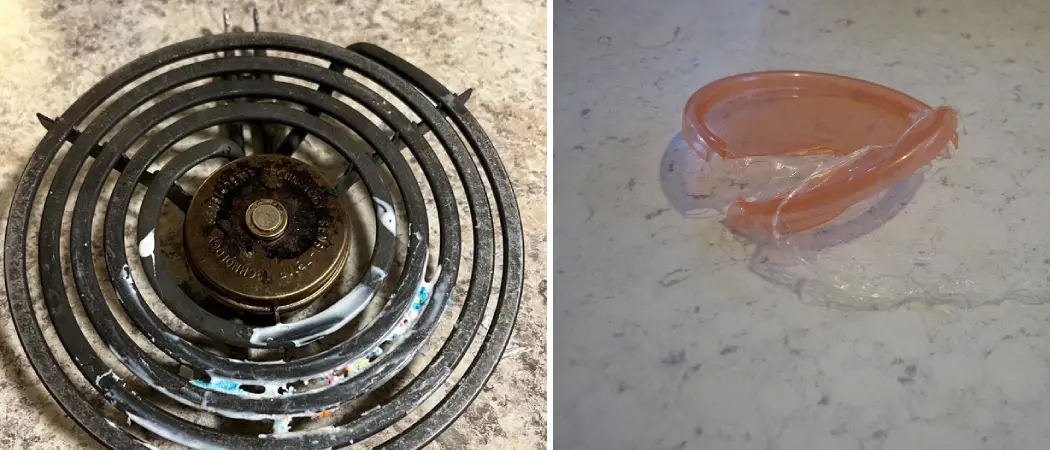Do you have melted plastic stuck to the coil of your dishwasher? If so, you know it’s an incredibly frustrating thing to deal with. Not only does it look unsightly and cause you embarrassment if guests come over, but it also can ruin the effectiveness of your appliance. Fortunately, for those in this position, there is hope! In this blog post, we will discuss how to get melted plastic off dishwasher coils quickly and easily using techniques that are safe for both your health and your home.
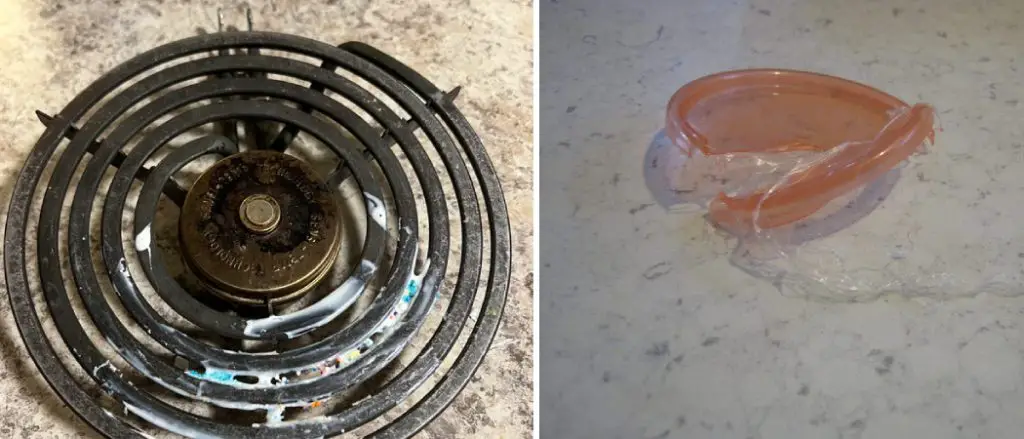
We’ll cover a few different options ranging from natural solutions to professional advice from experts so that you can find a method that works best for you. So keep reading if getting rid of melted plastic on your dishwasher coil has become a priority – by following these steps, we promise it won’t be an issue anymore!
Understanding the Dishwasher Coil
Anatomy of a Dishwasher:
A dishwasher is a complex appliance with several key components working together to clean your dishes. At the base of the dishwasher, you’ll find the heating element or the coil, which is typically a thick, circular piece of metal. This element heats up the water to an optimal temperature for dishwashing. It’s essential for both washing and drying the dishes effectively.
The Role of the Heating Element:
The heating element plays a crucial role in the dishwasher’s operation. It heats the water to a temperature high enough to break down food particles and grease but not so high as to damage dishes. However, if plastic items come into direct contact with the heating element, they can easily melt due to the high temperatures.
Common Culprits:
Typically, lightweight plastic items such as bread bag clips, straws, plastic utensils, or small lids can accidentally fall to the bottom during a wash cycle and come into contact with the heating element, resulting in melting.
Precautions for Future Avoidance:
To prevent plastic from melting on the heating element, always check the dishwasher before starting it and ensure no small plastic items can fall on the heating coil. Use the top rack for all plastic items, or hand wash them if they are not dishwasher safe. Regular maintenance and cleaning can also help keep your dishwasher in top condition and prevent future mishaps.
Preparing for the Removal Process
Before launching into the actual process of removing the melted plastic, it’s important to prepare sufficiently. This includes gathering all the necessary tools and materials and ensuring appropriate safety measures are in place.
1. Gathering the Necessary Tools and Materials
To carry out this task, you’re going to need a few essential items. Safety gloves are a must to protect your hands during the process. Additionally, a heat-resistant spatula or scraper will come in handy for gently prying the melted plastic away from the coil. Acetone-based nail polish remover is another critical tool, as it can help break down the plastic, making it easier to remove. Lastly, a clean cloth for wiping and a bucket of warm, soapy water for rinsing off any remnants will also be needed. Gather all these items before you commence with the task to ensure a smooth and efficient process.
1. Ensuring Safety Precautions
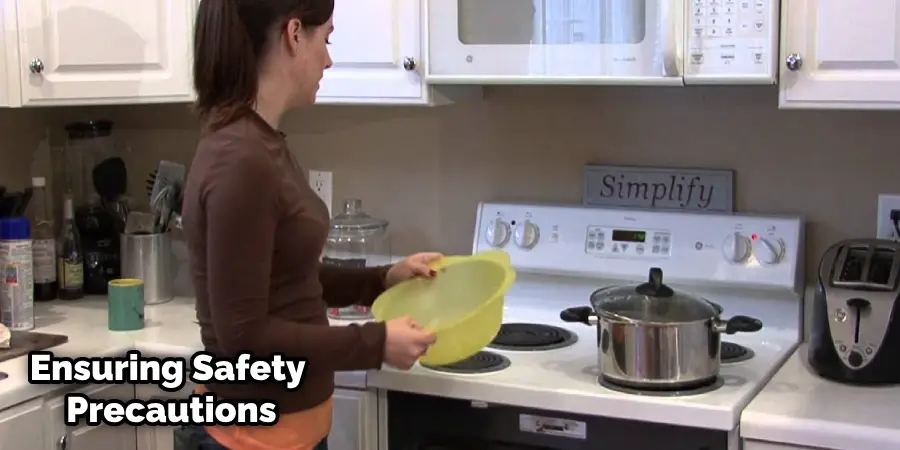
Safety is paramount when dealing with appliances. Therefore, before starting the removal process, ensure the dishwasher is unplugged and completely cooled down. This step is crucial to avoid any unforeseeable accidents or damages to the machine. Always wear your safety gloves to protect your hands from sharp edges or hot surfaces. Avoid direct contact with the heating coil or melted plastic to prevent any burns. Patience and caution are key here – don’t rush the process, and always prioritize your safety above all else.
Assessing the Extent of the Damage
Before we jump into the removal process, it’s essential to thoroughly inspect the affected area to determine the extent of the damage. The amount and consistency of the melted plastic will dictate the removal process. Using a flashlight, visually inspect the dishwasher coil for plastic residue.
If you are dealing with a thin layer of melted plastic, which is relatively smooth and spread out, you can remove it fairly quickly with minimal scraping. However, thicker blobs of plastic, especially those that have hardened into a more solid state, may require a more intensive approach.
Remember, your damage assessment will shape the rest of your action plan, so take your time during this step. Ensure you have a clear understanding of the task at hand before proceeding to the next stage of the removal process.
8 Methods on How to Get Melted Plastic Off Dishwasher Coil
Method 1: Using Nail Polish Remover
Using acetone-based nail polish remover is a popular method for removing melted plastic from dishwasher coils. The chemicals in the nail polish remover help break down the plastic, making it easier to remove. To use this method, follow these steps:
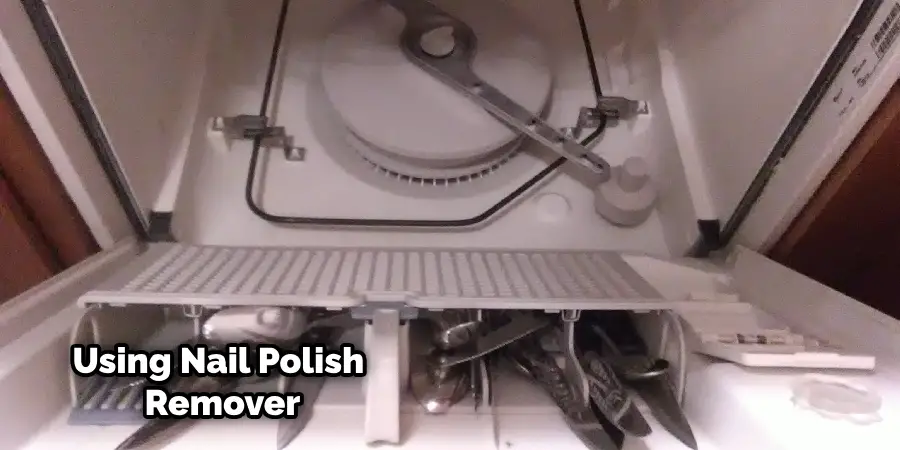
- Apply a small amount of nail polish remover on a cotton ball or cloth.
- Begin dabbing the melted plastic with the nail polish remover, ensuring you cover the entire affected area.
- Let it sit for a few minutes to allow the chemicals to work on the plastic.
- Using your scraper or spatula, gently scrape away at the melted plastic, starting from the edges and working inward.
- Repeat this process until all of the plastic is removed.
- Once complete, wipe down the area with a clean cloth soaked in warm, soapy water.
- Rinse thoroughly and ensure all nail polish remover residue has been removed.
- Let the dishwasher coil dry completely before plugging it back in and using it again.
Method 2: Using a Hairdryer
If your melted plastic is still relatively soft, you can use heat to soften it further and make it easier to remove. Here’s how:
- Plug in a hairdryer and set it on the highest heat setting.
- Hold the dryer about 6-8 inches away from the melted plastic, directing the hot air towards it.
- Move the hairdryer back and forth over the affected area for a few minutes.
- Using your scraper or spatula, gently scrape away at the melted plastic, starting from the edges and working inward.
- Repeat this process until all of the plastic is removed.
- Once complete, use warm, soapy water to clean off any residue and let the coil dry completely before using it again.
Method 3: Using Boiling Water
Boiling water can also help soften the melted plastic, making it easier to remove. Here’s how:
- Bring a pot of water to a boil on your stovetop.
- Using tongs or an oven mitt, carefully pour the boiling water over the affected area of the dishwasher coil.
- Allow it to sit for a few minutes to soften the plastic.
- Using your scraper or spatula, gently scrape away at the melted plastic, starting from the edges and working inward.
- Repeat this process until all of the plastic is removed.
- Once complete, use warm, soapy water to clean off any residue and let the coil dry completely before using it again.
Method 4: Using Ice
If the melted plastic has hardened into a solid state, using ice can help make it more brittle and easier to remove. Here’s how:
- Place a few ice cubes on top of the melted plastic.
- Let them sit for a few minutes until the plastic becomes cold and hard.
- Using your scraper or spatula, gently scrape away at the melted plastic, starting from the edges and working inward.
- Repeat this process until all of the plastic is removed.
- Once complete, use warm, soapy water to clean off any residue and let the coil dry completely before using it again.
Method 5: Using Cooking Oil
Cooking oil can help dissolve melted plastic and make it easier to remove. Here’s how:
- Apply a small amount of cooking oil onto a paper towel or cloth.
- Begin rubbing the melted plastic with the oil-soaked towel, ensuring you cover the entire affected area.
- Let it sit for a few minutes to allow the oil to dissolve the plastic.
- Using your scraper or spatula, gently scrape away at the melted plastic, starting from the edges and working inward.
- Repeat this process until all of the plastic is removed.
- Once complete, use warm, soapy water to clean off any residue and let the coil dry completely before using it again.
Method 6: Using WD-40
WD-40 is a multipurpose lubricant that can also be used to remove melted plastic from dishwasher coils. Here’s how:
- Spray WD-40 directly onto the affected area.
- Let it sit for a few minutes to allow it to penetrate the plastic.
- Using your scraper or spatula, gently scrape away at the melted plastic, starting from the edges and working inward.
- Repeat this process until all of the plastic is removed.
- Once complete, use warm, soapy water to clean off any residue and let the coil dry completely before using it again.
Method 7: Using a Commercial Plastic Remover
If all else fails, you can purchase a commercial plastic remover specifically designed for removing melted plastic from surfaces. Be sure to follow the instructions on the product for best results carefully.
Method 8: Calling a Professional
If you are unable to remove the melted plastic yourself, call a professional. They will have the proper tools and expertise to remove the plastic safely without damaging your dishwasher coil.
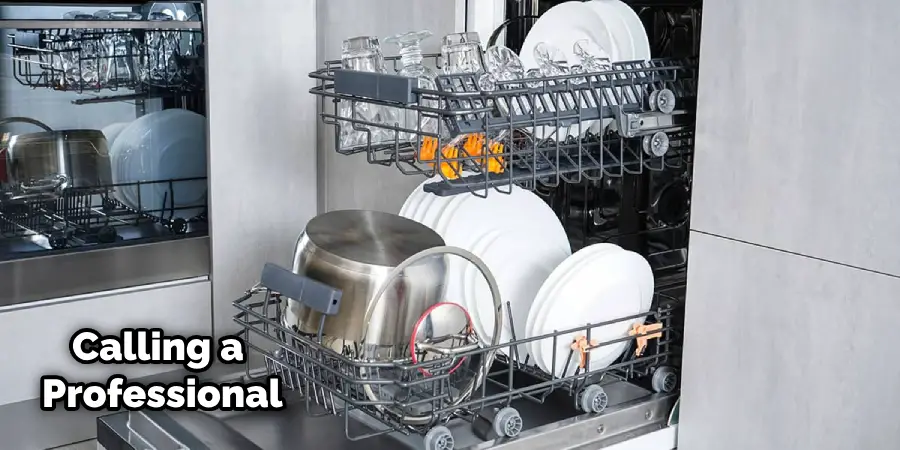
Safety is always the top priority when dealing with any household appliance. If you feel unsure or uncomfortable at any point during the removal process, it is best to stop and call a professional for assistance.
Advanced Techniques for Melted Plastic Removal from Dishwasher Coils
While the methods listed above can help in most situations, there are instances where you may need to apply more advanced techniques. These techniques involve accessing the hidden parts of the dishwasher, using specialized tools, and deciding when it’s time to replace the heating element.
Accessing the Heating Element
The heating element in a dishwasher is normally located on the bottom of the machine. However, in some models, it may be hidden and not readily visible. In such cases, you may need to remove the dishwasher racks to access the heating element.
- For the top rack, most dishwashers have small clips or tabs on the sides that can be pushed in or pulled up to release the rack. Once released, the rack should slide out easily.
- The bottom rack is usually less complex; it should lift out without any clips or tabs to release. Just pull it straight out.
Remember to place the racks in a safe place after removal to avoid misplacing any parts.
Specialized Tools
While conventional tools like spatulas or scrapers are generally effective, sometimes the plastic might melt into tight spaces and crevices, making removal more challenging. This is where specialized tools such as electric toothbrush heads or dental tools come in handy.
Electric toothbrush heads, with their small size and vibrating action, can reach these tight spots and loosen the plastic. Similarly, dental tools, with their pointed ends, can pick out plastic stuck in crannies. Always remember to exercise care when using these tools to avoid damaging the heating element.
Replacement of the Heating Element
If the melted plastic has severely damaged the heating element, you may need to consider replacing it entirely. While some handy homeowners may feel comfortable performing this task, it involves handling electrical wiring and should be done with caution.
Most heating elements are held in place by a couple of brackets and connected to the dishwasher with a few wires. To replace it, you’ll first need to disconnect the power and then disconnect the cables attached to the heating element. Once done, you can remove the brackets and pull the heating element out.
A new heating element can be installed by reversing the steps. Remember, if you have any doubts about performing these steps, it’s best to call a professional. They’ll have the specialized knowledge and tools to handle the job safely and correctly.
In conclusion, removing melted plastic from your dishwasher coil can be a challenging task, but with these advanced techniques, you should be better equipped to handle it. Remember, always prioritize safety, and when in doubt, don’t hesitate to call a professional.
Cleaning & Post-Treatment
After removing the melted plastic, it’s essential to take further steps to ensure your dishwasher is clean, odor-free, and ready for use again.
Thorough Rinse
Rinsing your dishwasher thoroughly is crucial to remove any remaining residue. Use warm, soapy water to scrub the interior and components, paying particular attention to the heating element where the plastic was located. A clean rinse ensures the appliance is safe to use and prevents any leftover plastic from reheating and causing further problems.
Neutralizing Odors
Despite successful removal, melted plastic can leave behind a stubborn smell. To neutralize this, you have several options. Baking soda, known for its odor absorbing properties, can be sprinkled on the bottom of the dishwasher and left overnight. The following day, run a short cycle to rinse it away. Vinegar is another effective natural deodorizer; simply place a cup of white vinegar in the top rack and run a full cycle. Alternatively, commercial odor neutralizers, available in most supermarkets or online, offer another powerful solution.
Test Run & Monitoring
Once your dishwasher is clean and odor-free, run a short, empty cycle to test its functionality. This also serves to remove any remaining cleaning agents. As it runs, monitor for any issues — noises, smells, or ineffective cleaning could indicate lingering problems. If all seems well, you can resume normal usage. However, if issues persist, consider consulting a professional. This process may seem tedious, but it is worth it to ensure your dishwasher is safe and effective to use.
Preventive Measures to Avoid Melted Plastic on Dishwasher Coils
While accidents can happen, here are a few preventive measures that can help you avoid melted plastic on your dishwasher coils in the future:
Preventive Measures to Avoid Melted Plastic on Dishwasher Coils
While accidents can happen, here are a few preventive measures that can help you avoid melted plastic on your dishwasher coils in the future:
1. Be Cautious when Using Plastic Items in the Dishwasher
Avoid placing plastic items too close to the heating element in the dishwasher, as they can melt and cause damage. Instead, try to position plastic items closer to the top or on the sides of the dishwasher.
2. Use Higher Heat Settings Sparingly
Higher heat settings can melt plastic more easily, so use them sparingly and only when needed. Consider using lower heat settings for everyday washes.
3. Regular Cleaning and Maintenance
Make it a habit to regularly check and clean the dishwasher coils to prevent any buildup. This can also improve the efficiency and lifespan of your dishwasher.
4. Use Dishwasher-Safe Plastic Items
When purchasing plastic items for your kitchen, make sure they are labeled as “dishwasher-safe.” These items are designed to withstand high heat and won’t melt in the dishwasher.
5. Avoid Overloading the Dishwasher
Overloading the dishwasher can lead to items being placed too close to the heating element, increasing the risk of melted plastic. Be mindful when loading your dishwasher and leave enough space between items.
By following these preventive measures, you can reduce the chances of melted plastic on your dishwasher coils and save yourself from a potentially frustrating cleanup process.
Common Mistakes to Avoid
Using Sharp Objects
Using sharp objects such as knives or razors can damage your dishwasher coil and potentially cause injury. It is best to use a plastic scraper or spatula specifically designed for removing melted plastic.
Scrubbing Too Hard
Scrubbing too hard can also cause damage to your dishwasher coil. Be gentle yet thorough when removing the melted plastic, and avoid using excessive force.
Using Harsh Chemicals
While using nail polish remover or WD-40 may be effective, it is important to handle these chemicals with caution and use them in a well-ventilated area. Avoid using harsh chemicals such as bleach or ammonia, as they can damage your dishwasher coil and pose health risks.
Not Cleaning the Coil Properly
After removing the melted plastic, it is essential to clean the coil properly before using your dishwasher again. Any residue left on the coil can cause further damage or affect its performance. Be sure to use warm, soapy water and dry the coil completely before using your dishwasher.
By avoiding these common mistakes, you can ensure a successful and safe removal of melted plastic from your dishwasher coil. With proper maintenance, you can prevent this issue from occurring in the future and keep your dishwasher functioning at its best.
Conclusion
Removing melted plastic from your dishwasher coil may seem like a daunting task, but with the proper methods and precautions, it can be done safely and effectively. Remember always to prioritize safety and consider calling a professional if needed. With these tips, you can get your dishwasher back in working condition in no time.
It’s essential to regularly maintain your household appliances to prevent any potential hazards and prolong their lifespan. Keep these methods in mind in case of any future mishaps with melted plastic. Happy cleaning! Thanks for reading this article about how to get melted plastic off dishwasher coil.

